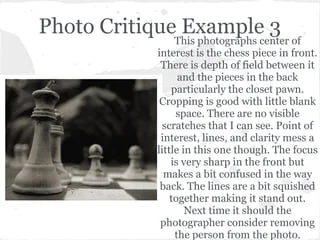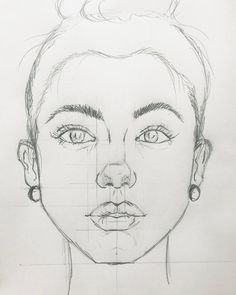How to Write a Photography Critique

Introduction:
Writing a photography critique helps photographers improve their work and develop better judgment in their craft. A well-reasoned critique can offer valuable insight that inspires and motivates the photographer. In this article, we will discuss how to write an effective photography critique, providing constructive feedback, while maintaining respect for the artist’s creativity and effort.
1. Begin with a general impression:
Start by sharing your overall impression of the photograph. Describe how you feel about the work, what feelings it evokes in you, and what first catches your eye. Try to be genuine in your praise or criticism but remember to remain objective and avoid emotional reactions.
2. Analyze the technical aspects:
A major part of photography critique is examining the technical aspects and execution of an image. Consider elements such as exposure, focus, color balance, composition, depth of field, lighting, use of space, and the choice of equipment used. Explain what worked well and areas that need improvement.
3. Assess the composition:
Composition serves as a foundation for strong photography. Look at the arrangement of elements within the frame – lines, shapes, textures, colors – think about how they lead your eye through the image. Discuss whether the composition creates harmony or tension and if any elements detract from otherwise powerful images.
4. Interpret the concept or message:
Every photograph tells a story or conveys an idea. Reflect on what message or emotion is behind the image. Does it tell a compelling story? Is there meaning beyond what visually obvious? Share these insights with the photographer to help them refine their conceptual approach.
5. Offer suggestions for improvement:
When providing suggestions for improvement, be specific rather than vague comments like “make it better” or “needs more contrast.” Suggest techniques or tools they might use to correct any issues in their image; could be cropping differently or experimenting with various aperture settings.
6. Be respectful and sensitive:
Always remember that photography is a personal and subjective medium. Be respectful in your critique, acknowledging the photographer’s effort, time, and creative vision. Utilize a polite tone, be tactful in pointing out areas for improvement, and praise their strengths to foster an atmosphere of constructive dialogue.
7. Check references and research previous work:
For a more comprehensive critique, examine the photographer’s portfolio or body of work to understand their progression as an artist. It allows for more accurate comments on consistency or improvement over time.
8. Encourage further development:
End the critique on a positive note by encouraging the photographer to keep practicing, experimenting, and pushing boundaries in their craft. Recommend courses, workshops, or books that could support their artistic growth.
Conclusion:
Writing a photography critique can be a valuable tool for fellow photographers to learn from one another’s experiences and perspectives. Attentively observing various aspects of an image – from technical choices to conceptual vision – enriches both the person giving the critique and the artist receiving it. By following these steps, you’ll be well-equipped to offer insightful feedback that empowers others in their journey as photographers.






